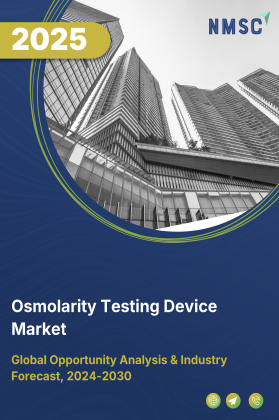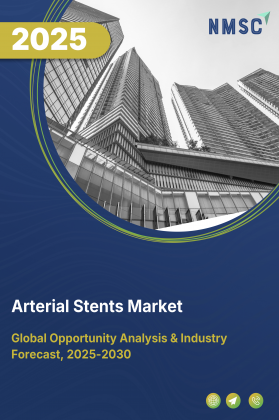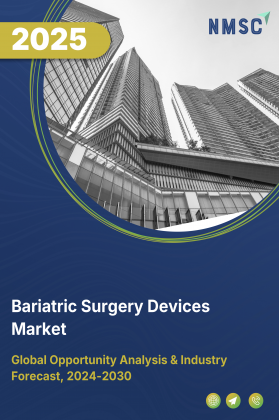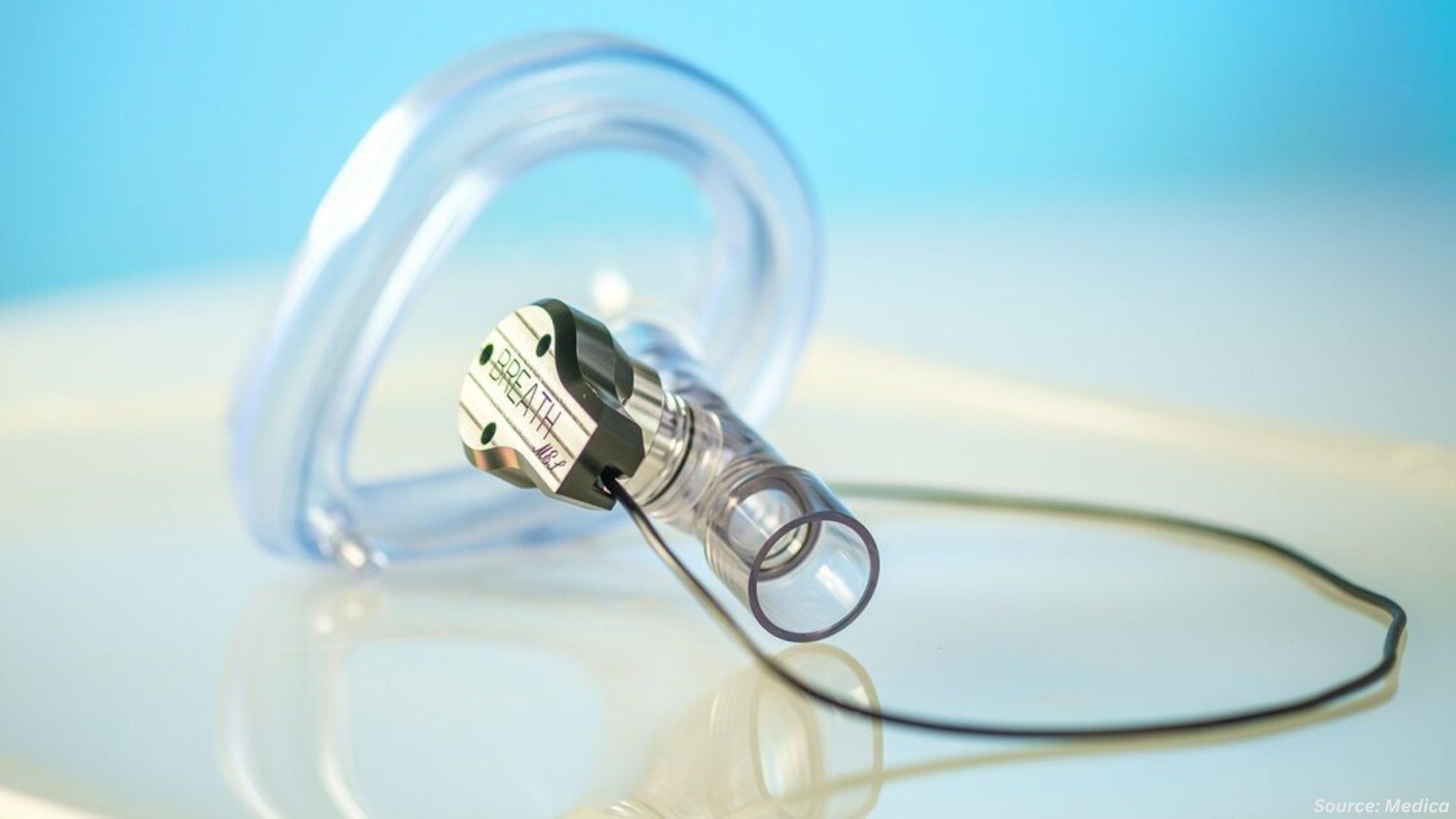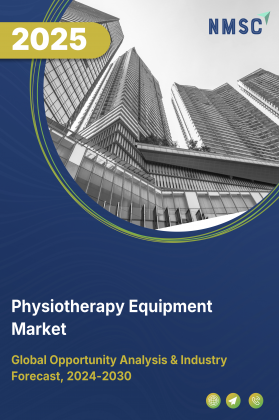
Physiotherapy Equipment Market by Product Type (Electrotherapy Devices, Exercise & Rehabilitation Equipment, Mobility Aids, Manual Therapy Tools and Others), by Application (Orthopaedic Rehabilitation, Neurological Rehabilitation, Sports Injury Rehabilitation and Others), by Technology (Conventional Devices, Advanced Devices and Others), by End-User (Hospitals, Rehabilitation Centres, Home Care Settings, Gyms, Sports Centres) – Global Opportunity Analysis and Industry Forecast, 2025–2030
Industry Overview
The global Physiotherapy Equipment Market size was valued at USD 25.16 billion in 2024 and is estimated to reach USD 27.08 billion in 2025 and is predicted to reach USD 39.12 billion by 2030 with a CAGR of 7.63% from 2025-2030.
The market is witnessing significant growth, driven by factors such as the rising aging population and increasing prevalence of musculoskeletal disorders. Older adults are more prone to conditions like arthritis, osteoporosis, and neurological impairments, while sedentary lifestyles and physically demanding occupations contribute to chronic pain and mobility issues, boosting demand for rehabilitation solutions.
Technological advancements, including portable electrotherapy units, robotic-assisted systems, virtual reality platforms, and AI-enabled devices, are enhancing treatment precision, enabling personalized care, and expanding home-based therapy options. However, the high cost of advanced equipment and associated maintenance limit adoption, particularly in low- and middle-income regions. At the same time, integration of AI and data analytics offers new growth opportunities by enabling real-time monitoring, remote therapy, and evidence-based treatment, positioning the market for continued expansion globally.
Rise in Aging Population Drives the Market Growth
The growing aging population is a key driver of the market, as older adults are more prone to conditions such as arthritis, osteoporosis, neurological disorders, and mobility impairments that require rehabilitation. According to Our World in Data (2024), there are around 830 million people aged 65 and older worldwide, and the latest UN projections show this number will almost double to 1.7 billion by 2054.
This demographic shift is fueling the demand for physiotherapy solutions to maintain mobility, reduce pain, and enhance quality of life, driving the uptake of devices like electrotherapy units, ultrasound therapy systems, and mobility aids, with countries such as Japan, Germany, and China making significant investments in geriatric care and home-based rehabilitation services.
Rising Incidence of Musculoskeletal Disorders Fuels Market Expansion
The increasing prevalence of musculoskeletal disorders such as chronic back pain, arthritis, tendinitis, and repetitive strain injuries, is a significant driver of the physiotherapy equipment market demand. Sedentary lifestyles, poor posture, obesity, and physically demanding occupations are contributing to a growing patient base requiring rehabilitation. These conditions limit mobility, cause persistent pain, and reduce quality of life, making physiotherapy a key component of treatment.
As demand for effective, non-invasive, and drug-free pain management rises, the need for advanced physiotherapy devices such as electrotherapy units, traction systems, therapeutic ultrasound equipment, and exercise therapy tools, continues to grow, fueling market expansion globally.
Technological Advancements in Therapy Devices Boost the Market Demand
Ongoing technological innovations are a major driver of the physiotherapy equipment market growth, enhancing treatment precision, efficiency, and patient outcomes. The development of advanced solutions such as portable electrotherapy units, robotic-assisted rehabilitation systems, virtual reality (VR)-based therapy platforms, and AI-enabled diagnostic tools is transforming physiotherapy practices.
These innovations not only improve the accuracy of therapy delivery but also enable personalized rehabilitation programs and remote monitoring, making physiotherapy more accessible and effective. Additionally, compact and user-friendly designs are expanding the use of such devices in home-based settings, further driving global market adoption.
High Cost of Advanced Physiotherapy Equipment Hinders the Market Growth
One of the key restraints in the market is the high cost associated with advanced therapy devices. Cutting-edge technologies such as robotic rehabilitation systems, AI-based therapy platforms, and high-end electrotherapy units require significant investment, which limit adoption, especially in low- and middle-income countries.
The expenses are not limited to initial purchase; maintenance, staff training, and periodic upgrades further add to the financial burden for healthcare providers. In regions with limited insurance coverage for physiotherapy, these costs often translate into higher out-of-pocket expenses for patients, reducing accessibility and slowing market growth.
Integration of Artificial Intelligence (AI) and Data Analytics Creates New Growth Opportunities for the Market
The integration of AI and data analytics presents a significant opportunity for the market by enabling smarter, more personalized rehabilitation solutions. AI-powered systems analyze patient data in real time, track progress, and automatically adjust therapy parameters to match individual needs, ensuring optimal recovery outcomes.
Data analytics further supports evidence-based decision-making, allowing therapists to identify patterns, predict recovery timelines, and customize treatment plans. These technologies also facilitate remote monitoring and tele-rehabilitation, making therapy accessible to patients in home or rural settings while maintaining high-quality care. As adoption of AI-driven healthcare solutions accelerates, physiotherapy equipment incorporating these capabilities is well-positioned for strong market growth.
Market Segmentations and Scope of the Study
The physiotherapy equipment market report is segmented on the basis of product type, applications, technology, end-users, and region. On the basis of product type, the market is segmented into electrotherapy devices, exercise and rehabilitation equipment and others. On the basis of applications, the market is divided into orthopaedic rehabilitation, neurological rehabilitation, sports injury rehabilitation, post-operative recovery, and chronic pain management. On the basis of technology, it is classified into conventional devices, advanced devices, and smart or IoT-enabled devices. On the basis of end-users, the market is segmented into hospitals, rehabilitation centres, home care settings, gyms, and sports centres. The regional breakdown includes regions such as North America, Europe, Asia-Pacific, and the Rest of the World (RoW).
Geographical Analysis
The rising prevalence of chronic and lifestyle-related disorders is a major driver of the physiotherapy equipment market share in North America. According to Health System Tracker in 2025, in the United States, these diseases account for 8 of the 10 leading causes of death. Conditions such as obesity, diabetes, arthritis, and cardiovascular diseases result in reduced mobility, muscle weakness, and long-term physical impairments, increasing the need for rehabilitation and physiotherapy interventions.
High awareness of preventive and restorative healthcare, along with well-established healthcare infrastructure and insurance coverage, supports the adoption of advanced devices like electrotherapy units, exercise therapy equipment, and robotic rehabilitation systems. Furthermore, growing demand for post-surgical rehabilitation and sports injury management continues to fuel market growth in the region.
In Europe, the growing geriatric population is a significant driver of the market. According to Bruegel in 2025, by 2050, working-age populations are projected to decline in 22 of 27 EU countries, while the share of those aged 85 and above will more than double across the EU. This demographic shift increases the prevalence of age-related conditions such as osteoporosis, arthritis, stroke, and neurological disorders, which require long-term rehabilitation to maintain mobility and quality of life.
Well-established healthcare systems, high awareness of preventive and restorative care, and government support for geriatric and home-based rehabilitation services are further boosting the adoption of advanced physiotherapy devices, including electrotherapy units, ultrasound therapy systems, and robotic rehabilitation equipment across the region.
In the Asia-Pacific region, the market is being driven by the expansion of healthcare infrastructure and increasing awareness of rehabilitation services. Rising incidences of musculoskeletal disorders, sports injuries, and age-related conditions are creating a larger patient base requiring physiotherapy interventions.
According to India Brand Equity Foundation (IBEF) in 2025, India’s public healthcare expenditure is expected to be 1.9% of GDP in FY26, compared to 2.5% in FY25, reflecting ongoing investment challenges but continued focus on improving healthcare access.
Countries such as China, Japan, and India are investing in hospitals, rehabilitation centers, and home-based care facilities, enhancing access to advanced physiotherapy devices like electrotherapy units, exercise therapy systems, and robotic rehabilitation equipment. Urbanization, changing lifestyles, and rising disposable incomes are further boosting demand for preventive and restorative healthcare, supporting market growth across the region.
In the rest of the world, the rising participation in professional and recreational sports is driving the demand for physiotherapy equipment. Sports and fitness-related injuries, including ligament tears, fractures, and muscle strains, require rehabilitation to restore mobility and prevent long-term complications.
Growing awareness of injury prevention, coupled with the expansion of sports medicine clinics, fitness centers, and specialized rehabilitation facilities, is encouraging the adoption of advanced physiotherapy devices such as exercise therapy equipment, electrotherapy units, and robotic-assisted rehabilitation systems. This trend is particularly evident in regions like Latin America, the Middle East, and Africa, where urbanization and increasing health consciousness are contributing to steady market growth.
Strategic Innovations Adopted by Key Players
Key players in the physiotherapy equipment industry are driving innovation and market leadership through advanced product launches and technology enhancements.
In February 2024, Zynex, Inc. launched two new therapy products, the Zynex Pro Hybrid LSO and Zynex DynaComp Cold Compression aimed at pain management and rehabilitation. The innovative devices offer versatile solutions for individual patient needs, combining comfort, support, and portability for faster recovery and enhanced daily activities.
In 2024, Storz Medical advanced its shockwave therapy portfolio with updates to the MASTERPULS “ultra” and “ultra+” systems, introducing ergonomic enhancements, 3D-printed components, and new device iterations aimed at clinics and sports medicine. These engineering improvements strengthen the company’s leadership in extracorporeal shockwave therapy (ESWT) and broaden its range of clinical applications.
Key Benefits
-
The report provides quantitative analysis and estimations of the industry from 2025 to 2030, which assists in identifying the prevailing market opportunities.
-
The study comprises a deep-dive analysis of the current and future physiotherapy equipment market trends to depict prevalent investment pockets in the sector.
-
Information related to key drivers, restraints, and opportunities and their impact on the market is provided in the report.
-
Competitive analysis of the players, along with their market share is provided in the report.
-
SWOT analysis and Porters Five Forces model is elaborated in the study.
-
Value chain analysis in the market study provides a clear picture of roles of stakeholders.
Physiotherapy Equipment Market Key Segments
By Product Type
-
Electrotherapy Devices
-
TENS Units
-
EMS Devices
-
IFT Units
-
NMES Devices
-
Ultrasound Therapy Devices
-
Laser Therapy Devices
-
Diathermy Machines
-
-
Exercise & Rehabilitation Equipment
-
Resistance Bands
-
Resistance Tubes
-
Therapy Balls
-
CPM Machines
-
Pulley Systems
-
Balance Trainers
-
Hand Exercisers
-
Rehab Bikes
-
-
Mobility Aids
-
Walkers
-
Crutches
-
Wheelchairs
-
Braces
-
Supports
-
Prosthetic Devices
-
-
Manual Therapy Tools
-
Foam Rollers
-
Massage Guns
-
Hot Therapy Packs
-
Cold Therapy Packs
-
-
Traction Therapy Equipment
-
Cervical Traction Units
-
Lumbar Traction Systems
-
-
Hydrotherapy Equipment
-
Therapy Pools
-
Paraffin Baths
-
Whirlpools
-
-
Diagnostic & Assessment Tools
-
Goniometers
-
Dynamometers
-
Posture Analysis Tools
-
-
Specialized Patient Group Equipment
-
Paediatric Physiotherapy Equipment
-
Geriatric Physiotherapy Equipment
-
By Application
-
Orthopaedic Rehabilitation
-
Neurological Rehabilitation
-
Sports Injury Rehabilitation
-
Post-Operative Recovery
-
Chronic Pain Management
By Technology
-
Conventional Devices
-
Advanced Devices
-
Smart/IoT-Enabled Devices
By End-User
-
Hospitals
-
Rehabilitation Centres
-
Home Care Settings
-
Gyms
-
Sports Centres
By Region
-
North America
-
The U.S.
-
Canada
-
Mexico
-
-
Europe
-
The UK
-
Germany
-
France
-
Italy
-
Spain
-
Denmark
-
Netherlands
-
Finland
-
Sweden
-
Norway
-
Russia
-
Rest of Europe
-
-
Asia-Pacific
-
China
-
Japan
-
India
-
South Korea
-
Australia
-
Indonesia
-
Singapore
-
Taiwan
-
Thailand
-
Rest of Asia-Pacific
-
-
RoW
-
Latin America
-
Middle East
-
Africa
-
Key Players
-
Enovis, Inc.
-
BTL Industries, Inc.
-
Enraf-Nonius B.V.
-
ITO Co., Ltd.
-
Zimmer MedizinSysteme
-
EMS Physio Ltd.
-
Dynatronics Corporation
-
Zynex Medical, Inc.
-
Storz Medical AG
-
Mettler Electronics
-
Richmar
-
HMS Medical Systems
-
OG Wellness Technologies
-
GymnaUniphy NV (Gymna)
-
Whitehall Manufacturing
Report Scope and Segmentation:
|
Parameters |
Details |
|
Market Size in 2025 |
USD 27.08 Billion |
|
Revenue Forecast in 2030 |
USD 39.12 Billion |
|
Growth Rate |
CAGR of 7.63% from 2025 to 2030 |
|
Analysis Period |
2024–2030 |
|
Base Year Considered |
2024 |
|
Forecast Period |
2025–2030 |
|
Market Size Estimation |
Million (USD) |
|
Growth Factors |
|
|
Countries Covered |
28 |
|
Companies Profiled |
10 |
|
Market Share |
Available for 10 companies |
|
Customization Scope |
Free customization (equivalent up to 80 working hours of analysts) after purchase. Addition or alteration to country, regional, and segment scope. |
|
Pricing and Purchase Options |
Avail customized purchase options to meet your exact research needs. |

















 Speak to Our Analyst
Speak to Our Analyst



